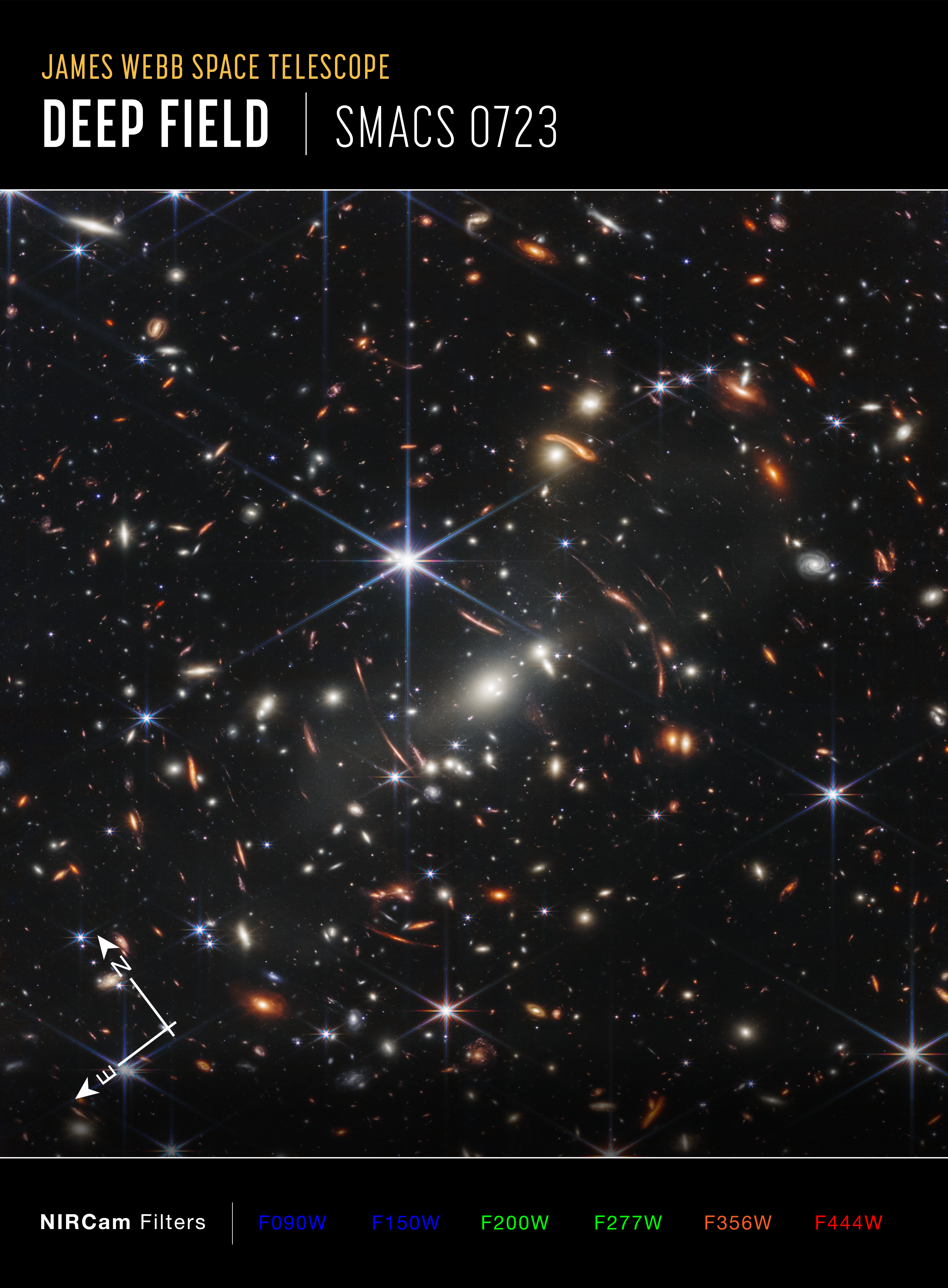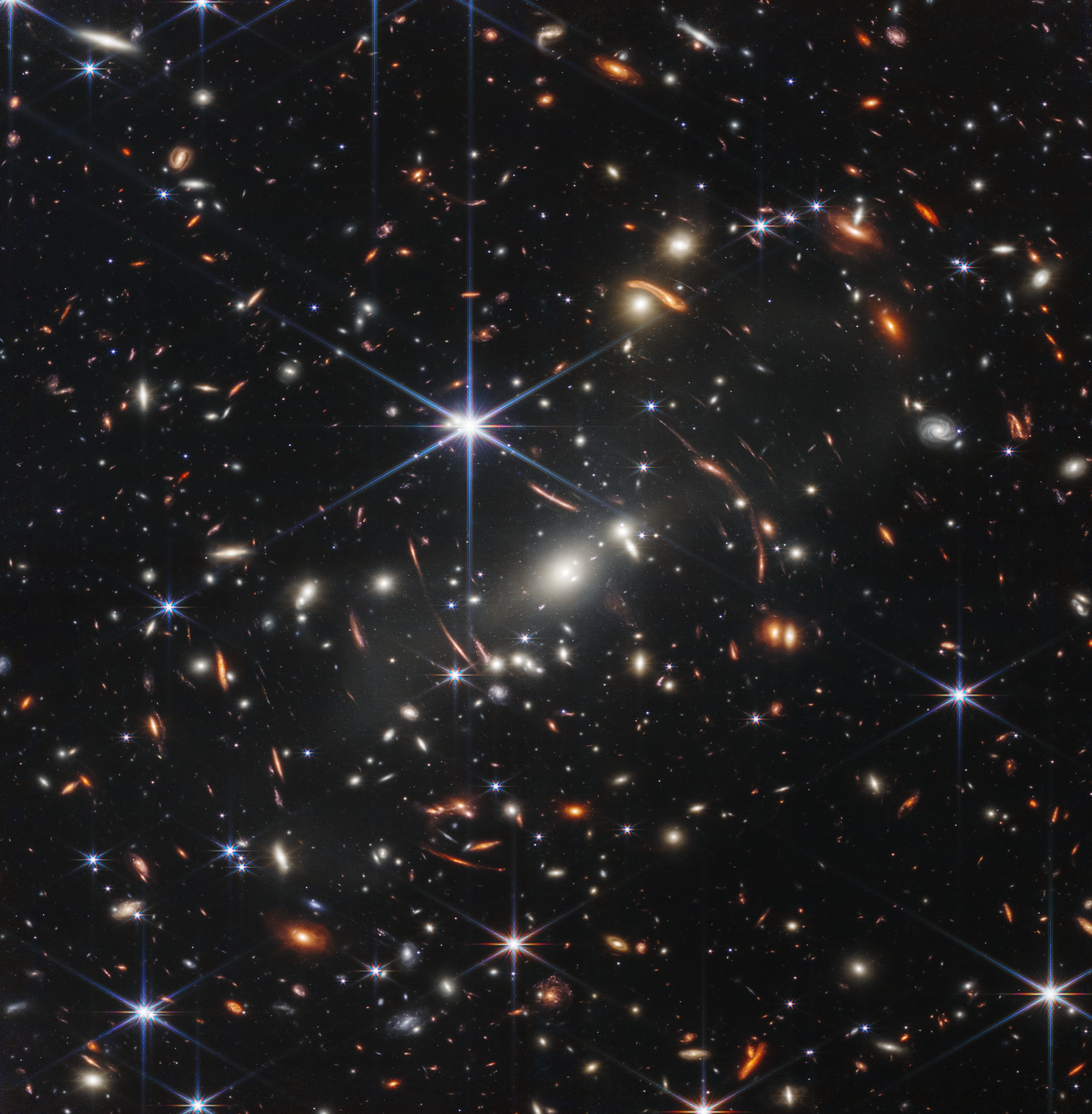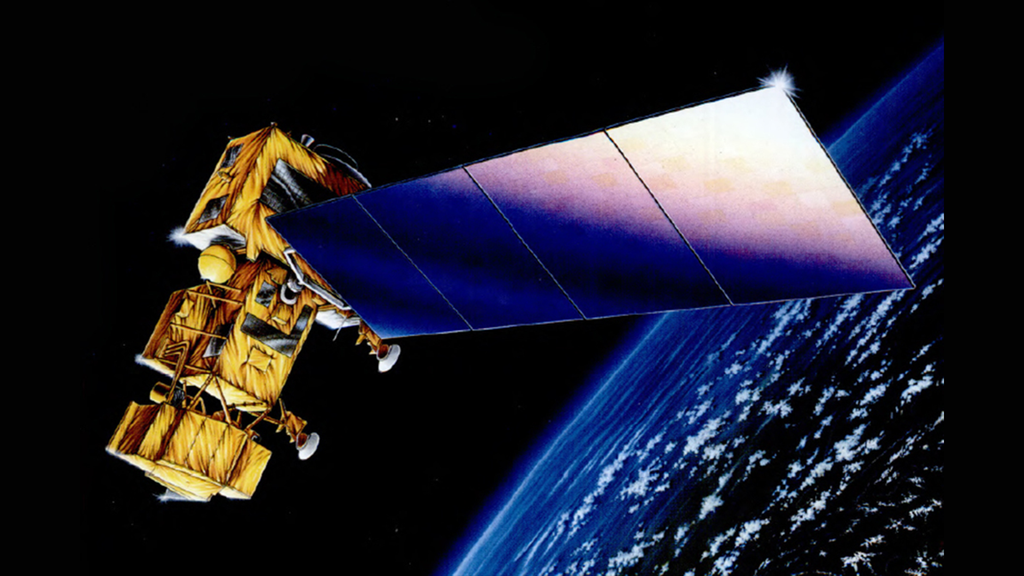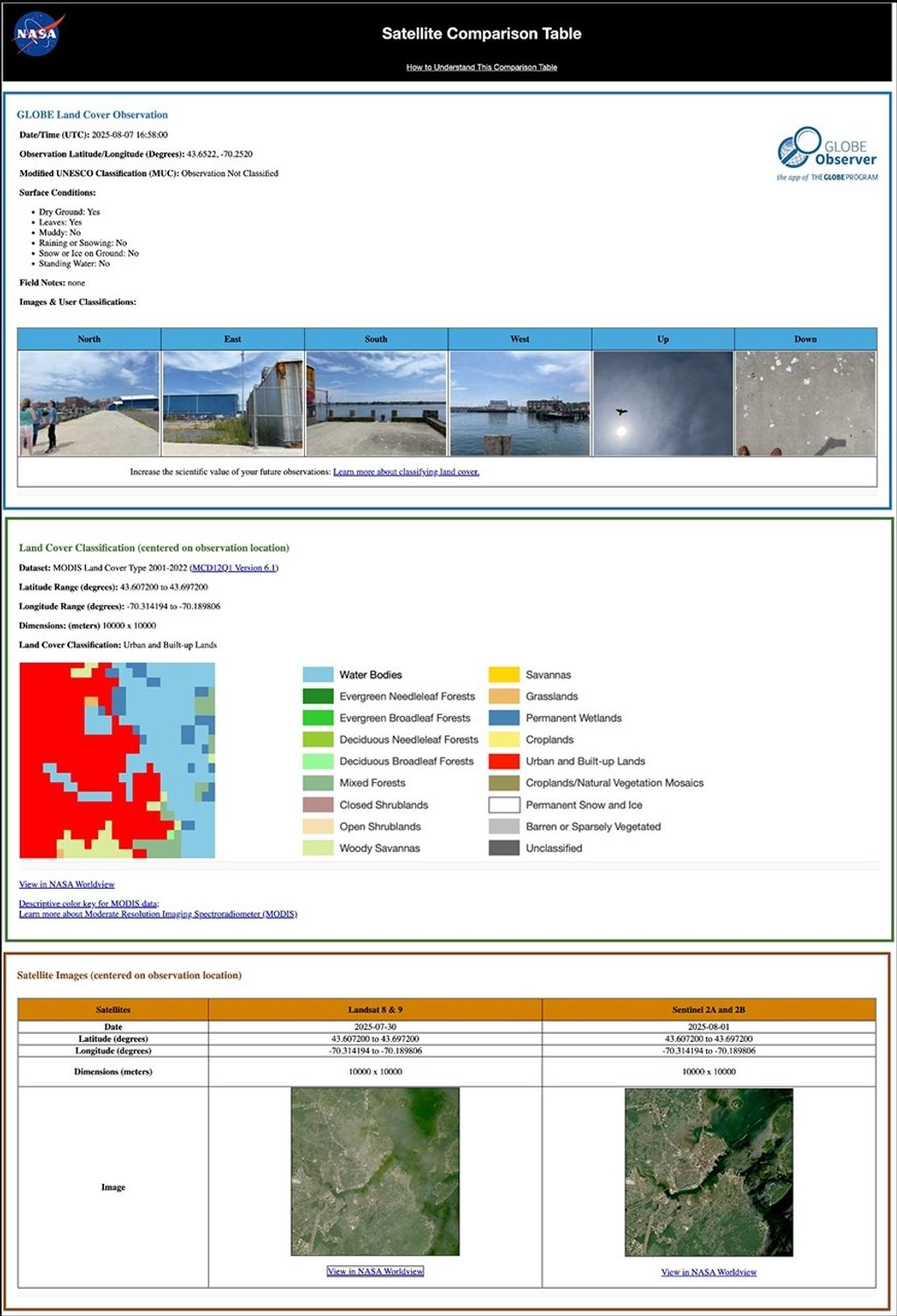1 min read
Webb’s First Deep Field (NIRCam Compass Image)

Image of galaxy cluster SMACS 0723, affectionately known as Webb’s First Deep Field, captured by Webb’s Near-Infrared Camera (NIRCam), with compass arrows and color key for reference.
The north and east compass arrows show the orientation of the image on the sky. Note that the relationship between north and east on the sky (as seen from below) is flipped relative to direction arrows on a map of the ground (as seen from above).
This image shows invisible near-infrared wavelengths of light that have been translated into visible-light colors. The color key shows which NIRCam filters were used when collecting the light. The color of each filter name is the visible light color used to represent the infrared light that passes through that filter.
Because this is a deep field that shows objects at various distances and magnifications, there is no scale bar.
Extended Description and Image Alt Text
Extended Description
Image titled “James Webb Space Telescope; Deep Field SMACS 0723,” with compass arrows and color key.
Image
This image shows many overlapping objects at various distances. They include foreground stars, galaxies in a galaxy cluster, and distorted background galaxies behind the galaxy cluster.
The background of space is black. Thousands of small galaxies appear across the image. Their colors vary. Some are shades of orange, others are white. Most appear as fuzzy ovals, but a few have distinctive spiral arms.
In front of the galaxies are several foreground stars. Most appear blue with diffraction spikes, forming eight-pointed star shapes. Some look as large as the galaxies that appear next to them.
A very bright star is slightly off center. It has eight blue, long diffraction spikes. In the center of the image, between 4 o’clock and 6 o’clock in the bright star’s spikes, are several bright, white galaxies. These are members of the galaxy cluster.
There are also many thin, long, orange arcs. They follow invisible concentric circles that curve around the center of the image. These are images of background galaxies that have been stretched and distorted by the foreground galaxy cluster.
Compass Arrows and Color Key
At the bottom left are compass arrows indicating the orientation of the image on the sky. The north arrow points in the 11 o’clock direction. The east arrow points toward 8 o’clock. Below the image is a color key showing which NIRCam filters were used to create the image. NIRCam Filters from left to right: F090W is blue; F150W is blue; F200W is green; F277W is green; F356W is orange; and F444W is red. Because this is a deep field image showing objects at many different distances and scales, there is no scale bar.
Image Alt Text
Near-infrared image of the galaxy cluster SMACS 0723 shown with compass arrows and color key.
About the Object
- R.A. PositionR.A. PositionRight ascension – analogous to longitude – is one component of an object's position.07:23:19.5
- Dec. PositionDec. PositionDeclination – analogous to latitude – is one component of an object's position.-73:27:15.6
- ConstellationConstellationOne of 88 recognized regions of the celestial sphere in which the object appears.Volans
- DistanceDistanceThe physical distance from Earth to the astronomical object. Distances within our solar system are usually measured in Astronomical Units (AU). Distances between stars are usually measured in light-years. Interstellar distances can also be measured in parsecs.Redshift of cluster is z=0.39 (about 4.24 billion light-years)
- DimensionsDimensionsThe physical size of the object or the apparent angle it subtends on the sky.Image is about 2.4 arcmin across
About the Data
- Data DescriptionData DescriptionProposal: A description of the observations, their scientific justification, and the links to the data available in the science archive.
Science Team: The astronomers who planned the observations and analyzed the data. "PI" refers to the Principal Investigator.This image was created with Webb data from proposal 2736. It is part of Webb Early Release Observations.
The Early Release Observations and associated materials were developed, executed, and compiled by the ERO production team:
Jaclyn Barrientes, Claire Blome, Hannah Braun, Matthew Brown, Margaret Carruthers, Dan Coe, Joseph DePasquale, Nestor Espinoza, Macarena Garcia Marin, Karl Gordon, Alaina Henry, Leah Hustak, Andi James, Ann Jenkins, Anton Koekemoer, Stephanie LaMassa, David Law, Alexandra Lockwood, Amaya Moro-Martin, Susan Mullally, Alyssa Pagan, Dani Player, Klaus Pontoppidan, Charles Proffitt, Christine Pulliam, Leah Ramsay, Swara Ravindranath, Neill Reid, Massimo Robberto, Elena Sabbi, Leonardo Ubeda.
The EROs were also made possible by the foundational efforts and support from the JWST instruments, STScI planning and scheduling, Data Management teams, and Office of Public Outreach.
- InstrumentInstrumentThe science instrument used to produce the data.NIRCam
- Exposure DatesExposure DatesThe date(s) that the telescope made its observations and the total exposure time.7 June 2022
- FiltersFiltersThe camera filters that were used in the science observations.F090W, F150W, F200W, F277W, F356W, F444W
- Object NameObject NameA name or catalog number that astronomers use to identify an astronomical object.SMACS 0723-73 (1RXS J072319.7-732735, SMACS J0723.3-7327)
- Object DescriptionObject DescriptionThe type of astronomical object.Lensing Galaxy Cluster
- Release DateJuly 11, 2022
- Science ReleaseNASA’s Webb Produces the Most Detailed Image of the Early Universe to Date
- CreditImage: NASA, ESA, CSA, STScI

These images are a composite of separate exposures acquired by the James Webb Space Telescope using the NIRCam instrument. Several filters were used to sample broad wavelength ranges. The color results from assigning different hues (colors) to each monochromatic (grayscale) image associated with an individual filter. In this case, the assigned colors are: Red: F444W Orange: F356W Green: F200W + F277W Blue: F090W + F150W
Related Images & Videos

Webb's First Deep Field Unveiled (NIRCam Image)
NASA’s James Webb Space Telescope has produced the deepest and sharpest infrared image of the distant universe to date. Known as Webb’s First Deep Field, this image of galaxy cluster SMACS 0723 is overflowing with detail. Thousands of galaxies – including the faintest objects...
Share
Details
Laura Betz
NASA’s Goddard Space Flight Center
Greenbelt, Maryland
laura.e.betz@nasa.gov
NASA, ESA, CSA, STScI































